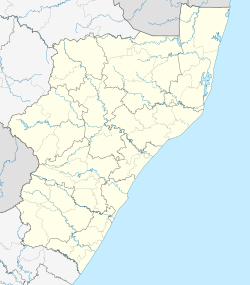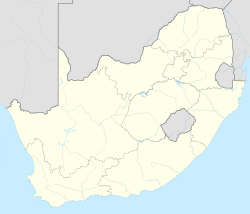Ulundi
| Ulundi | |
|---|---|
|
|
|
| Coordinates: 28°19′S 31°25′E / 28.317°S 31.417°ECoordinates: 28°19′S 31°25′E / 28.317°S 31.417°E | |
| Country | South Africa |
| Province | KwaZulu-Natal |
| District | Zululand |
| Municipality | Ulundi |
| Established | 1873 |
| Area | |
| • Total | 16.62 km2 (6.42 sq mi) |
| Elevation | 540 m (1,770 ft) |
| Population (2011) | |
| • Total | 19,840 |
| • Density | 1,200/km2 (3,100/sq mi) |
| Racial makeup (2011) | |
| • Black African | 98.9% |
| • Coloured | 0.3% |
| • Indian/Asian | 0.2% |
| • White | 0.2% |
| • Other | 0.4% |
| First languages (2011) | |
| • Zulu | 93.4% |
| • English | 2.6% |
| • S. Ndebele | 1.1% |
| • Other | 2.9% |
| PO box | 3838 |
| Area code | 035 |
Ulundi, also known as Mahlabathini is a town in the Zululand District Municipality. At one time the capital of Zululand in South Africa and later the capital of the Bantustan of KwaZulu, Ulundi now lies in KwaZulu-Natal Province (of which, from 1994 to 2004, it alternated with Pietermaritzburg as the provincial capital). The town now includes Ulundi Airport, a three-star hotel, and some museums amongst its sights. In the 2001 Census, the population of the town was recorded as 18,420.
When Cetshwayo became king of the Zulus on 1 September 1873, he created, as was customary, a new capital for the nation, naming it "uluNdi" ("The high place"). On 4 July 1879, in the Battle of Ulundi (the final battle of the Anglo-Zulu War), the British army captured the royal kraal and razed it to the ground.
Nearby is Ondini, where King Mpande, Cetshwayo's father, had his kraal. A large Zulu hut now is on the site.
Köppen-Geiger climate classification system classifies its climate as humid subtropical (Cfa). It is rainier in the warmer months.
...
Wikipedia



